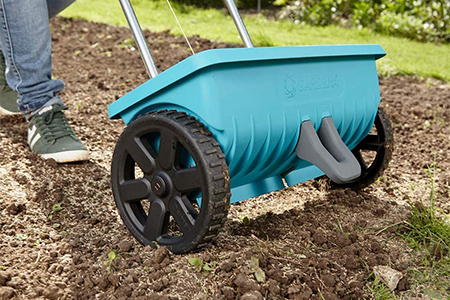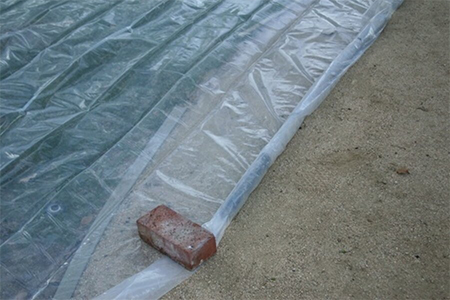Establish a Lush, Green Lawn from Seed
If your lawn is not lush and green during summer, perhaps it is time to rip out and start again to establish a lush, green lawn in time for spring.
01/06/2022
Managing to keep a lush, green lawn is no easy task when you work full time. Spending time aerating the soil, pulling weeds, spreading fertilizer and so on, sometimes can be a bit much and you let it slip. A lawn that receives no care won't last long before it ends up looking like a yellow mat of dead growth. If this is your lawn or you need to establish a lawn for the first time, follow the easy steps below on how to plant and care for grass seeds for a luxurious lawn.
Most homeowners have Kikuyu grass planted as their lawn, but this is a high-maintenance grass species that requires lots of water and constant maintenance to prevent shoots from spreading everywhere. Most instant lawn suppliers stock Kikuyu grass and if you want a specialist grass that grows in semi-shade or can survive with less maintenance, the only option is to use grass seed. The web gives you plenty of sources on which to base your research and determine the best grass seed for your garden.
1. Prepare the Area for Planting
To ensure the best possible success when planting seed for a new lawn, you need to prepare the area and dig it up. Use a fork to loosen the soil and make it easier to remove any weeds that have taken over, making sure to remove them by the roots. With a garden fork, lift and turn the soil over to a depth of around 50 centimetres deep. Sprinkle the dug up area with a lawn fertliser high in phosphorus, potassium, and nitrogen.
Use a steel rake to remove any stones or larger debris and then spread the soil evenly over the area to be planted.
2. Sowing Grass Seed
Do your research into the best type of grass for your location. There are all types of grasses that you can choose from, from grass species that grow well in shade or semi-shade to those that are fairly drought-tolerant and ideal if you want a low-maintenance lawn. The package will provide all the details you need to know about the grass species and how it performs.
The grass seed is spread evenly over the area, and it is a good idea to use a long plank of wood to walk on as you spread the seed row by row. The best solution would be to use a drop spreader to evenly distribute the seed, but you will need to find a hire shop that offers this for rental. Follow the recommended spread rate for the seed you will be using as they are not all spread the same.
3. Water and Cover
This next step is vitally important and should not be skipped. The entire area that has been seeded needs to be watered frequently. Use a hosepipe and spray nozzle to lightly wet the surface for the first two weeks and a deeper watering once a week. You should ideally water early evening.
It is essential that the soil does not dry out as this will also be detrimental to the seeds. An easy way to preserve moisture is to cover the entire area with clear plastic sheeting. This will help conserve moisture during the day and protect the seed and resulting seedlings from frost.
As seedlings start to shoot through the soil, switch to a deeper watering of twice a week during hot weather and once a week if the weather is cold. From this point, the seedlings will develop a strong root system. Mowing the lawn should be done only once full coverage is achieved and the grass shoots reach the proper height for cutting.








